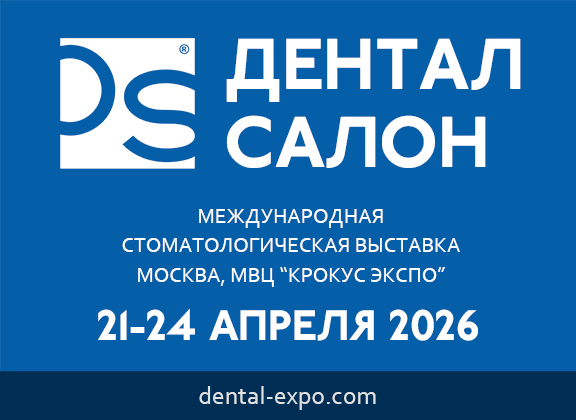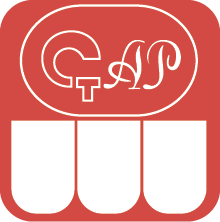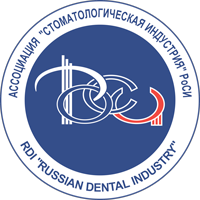DOI:
10.37988/1811-153X_2023_4_166Postural changes in the musculoskeletal system with dentoalveolar deformities
Downloads
Abstract
Purpose — to identify and substantiate the correlation between the inclination of the upper premolars and the inclination of the ankle.Materials and methods.
In 101 subjects, the inclination of the first premolars in the upper jaw on the right and left relative to the plane of the upper jaw was measured. At the same time, the angle of inclination of the ankle relative to the plane of the horizon was measured. The angle of inclination of premolars was measured on coronal sections of cone beam computed tomography, which was carried out at the stage of diagnosis. Ankle inclination angle was measured visually using a photo protocol and a graphic ruler. That side of the angle, the value of which was <90°, was taken into account. For angles >90°, the adjacent angle was taken (i.e., 180 minus the angle of inclination). Next, the difference between the angles of inclination of the right tooth (RT) and the inclination of the foot on the right (AR) and on the left (AL), as well as between the angles of inclination of the left tooth (LT) and the inclination of the foot on the right (AR) and left (AL) was calculated. Based on the results obtained, division into groups was carried out: group I — RT-AR, group II — RT-AL, group III — LT-AR, group IV — LT-AL, the smallest value was revealed.
Results.
For group I, the average difference was 2.31° (CI 95% 1.31—3.50°), for initially acute angles it was 1.25° (0.75—1.75°), and for adjacent ones it was 2.95° (1.40—4.70°). For group IV (LT-AL), the average difference was 1.42° (0.79—2.21°), for acute corners 0.25° (0.00—0.63°), and for adjacent corners 2.00° (1.13—3.00°). For group II, the average difference was 1.90° (1.17—2.76°), for acute angles 1.93° (1.13—2.80°), and for adjacent angles 1.86° (0.71—3.36°). For group III, the average difference was 1.69° (0.88—2.56°), for acute angles 1.25° (0.50—2.38°), and for adjacent angles 2.13° (0.88—3.76°).
Conclusion.
According to the results of the study, it can be concluded that in most patients there is a correlation between the angle of inclination between of the upper first premolars and the ankle. On the homolateral side in group I and IV in 55.5% cases, on the heterolateral side in groups II and III in 44.5% of cases.
Key words:
postural balance, malocclusion, musculoskeletal system, orthodontics, dentition, foot disordersFor Citation
[1]
Vasilyeva M.B., Kuznecova A.G., Perevezencev G.S., Guseynov N.A. Postural changes in the musculoskeletal system with dentoalveolar deformities. Clinical Dentistry (Russia). 2024; 26 (4): 166—171. DOI: 10.37988/1811-153X_2023_4_166
References
- Masucci C., Oueiss A., Maniere-Ezvan A., Orthlieb J.D., Casazza E. [What is a malocclusion?]. Orthod Fr. 2020; 91 (1—2): 57—67 (In French). PMID: 33146134
- Lobb W.K., Ismail A.I., Andrews C.L., Spracklin T.E. Evaluation of orthodontic treatment using the Dental Aesthetic Index. Am J Orthod Dentofacial Orthop. 1994; 106 (1): 70—5. PMID: 8017352
- Kozanecka A., Sarul M., Kawala B., Antoszewska-Smith J. Objectification of Orthodontic Treatment Needs: Does the Classification of Malocclusions or a History of Orthodontic Treatment Matter? Adv Clin Exp Med. 2016; 25 (6): 1303—1312. PMID: 28028986
- D'Onofrio L. Oral dysfunction as a cause of malocclusion. Orthod Craniofac Res. 2019; 22 Suppl 1 (Suppl 1): 43—48. PMID: 31074141
- De Ridder L., Aleksieva A., Willems G., Declerck D., Cadenas de Llano-Pérula M. Prevalence of orthodontic malocclusions in healthy children and adolescents: A systematic review. Int J Environ Res Public Health. 2022; 19 (12): 7446. PMID: 35742703
- Amr-Rey O., Sánchez-Delgado P., Salvador-Palmer R., Cibrián R., Paredes-Gallardo V. Association between malocclusion and articulation of phonemes in early childhood. Angle Orthod. 2022; 92 (4): 505—511. PMID: 35275982
- Bellot-Arcís C., Montiel-Company J.M., Almerich-Silla J.M. Psychosocial impact of malocclusion in Spanish adolescents. Korean J Orthod. 2013; 43 (4): 193—200. PMID: 24015389
- Masood Y., Masood M., Zainul N.N., Araby N.B., Hussain S.F., Newton T. Impact of malocclusion on oral health related quality of life in young people. Health Qual Life Outcomes. 2013; 11: 25. PMID: 23443041
- Shroff B. Malocclusion as a cause for temporomandibular disorders and orthodontics as a treatment. Oral Maxillofac Surg Clin North Am. 2018; 30 (3): 299—302. PMID: 29866453
- Frontera W.R. Physiologic changes of the musculoskeletal system with aging: A brief review. Phys Med Rehabil Clin N Am. 2017; 28 (4): 705—711. PMID: 29031337
- Brooks S.V., Guzman S.D., Ruiz L.P. Skeletal muscle structure, physiology, and function. Handb Clin Neurol. 2023; 195: 3—16. PMID: 37562874
- Pizzigalli L., Micheletti Cremasco M., Mulasso A., Rainoldi A. The contribution of postural balance analysis in older adult fallers: A narrative review. J Bodyw Mov Ther. 2016; 20 (2): 409—17. PMID: 27210860
- Plaza S.P., Reimpell A., Silva J., Montoya D. Relationship between skeletal Class II and Class III malocclusions with vertical skeletal pattern. Dental Press J Orthod. 2019; 24 (4): 63—72. PMID: 31508708
- Iodice G., Danzi G., Cimino R., Paduano S., Michelotti A. Association between posterior crossbite, skeletal, and muscle asymmetry: a systematic review. Eur J Orthod. 2016; 38 (6): 638—651. PMID: 26823371
- Koletsi D., Makou M., Pandis N. Effect of orthodontic management and orofacial muscle training protocols on the correction of myofunctional and myoskeletal problems in developing dentition. A systematic review and meta-analysis. Orthod Craniofac Res. 2018; 21 (4): 202—215. PMID: 30152171
- Ivanov V.V., Achkasov E.E., Markov N.M., Krechina E.K. Changes of postural status in patients undergoing orthodontic treatment. Stomatology. 2018; 1: 50—53 (In Russian). eLIBRARY ID: 32449470
- Saccomanno S., Saran S., Paskay L.C., Giannotta N., Mastrapasqua R.F., Pirino A., Scoppa F. Malocclusion and scoliosis: Is there a correlation? J Pers Med. 2023; 13 (8): 1249. PMID: 37623498
- Pérez-Belloso A.J., Coheña-Jiménez M., Cabrera-Domínguez M.E., Galan-González A.F., Domínguez-Reyes A., Pabón-Carrasco M. Influence of dental malocclusion on body posture and foot posture in children: A cross-sectional study. Healthcare (Basel). 2020; 8 (4): 485. PMID: 33202576
- Cabrera-Domínguez M.E., Domínguez-Reyes A., Pabón-Carrasco M., Pérez-Belloso A.J., Coheña-Jiménez M., Galán-González A.F. Dental malocclusion and its relation to the podal system. Front Pediatr. 2021; 9: 654229. PMID: 34239846
- Marchena-Rodríguez A., Moreno-Morales N., Ramírez-Parga E., Labajo-Manzanares M.T., Luque-Suárez A., Gijon-Nogueron G. Relationship between foot posture and dental malocclusions in children aged 6 to 9 years: A cross-sectional study. Medicine (Baltimore). 2018; 97 (19): e0701. PMID: 29742725
- Šidlauskienė M., Smailienė D., Lopatienė K., Čekanauskas E., Pribuišienė R., Šidlauskas M. Relationships between malocclusion, body posture, and nasopharyngeal pathology in pre-orthodontic children. Med Sci Monit. 2015; 21: 1765—73. PMID: 26086193
- Sambataro S., Bocchieri S., Cervino G., La Bruna R., Cicciù A., Innorta M., Torrisi B., Cicciù M. Correlations between malocclusion and postural anomalies in children with mixed dentition. J Funct Morphol Kinesiol. 2019; 4 (3): 45. PMID: 33467360
- Van Dyck C., Dekeyser A., Vantricht E., Manders E., Goeleven A., Fieuws S., Willems G. The effect of orofacial myofunctional treatment in children with anterior open bite and tongue dysfunction: a pilot study. Eur J Orthod. 2016; 38 (3): 227—34. PMID: 26136435
- Grippaudo C., Paolantonio E.G., Antonini G., Saulle R., La Torre G., Deli R. Association between oral habits, mouth breathing and malocclusion. Acta Otorhinolaryngol Ital. 2016; 36 (5): 386—394. PMID: 27958599
- Abate A., Cavagnetto D., Fama A., Maspero C., Farronato G. Relationship between breastfeeding and malocclusion: A systematic review of the literature. Nutrients. 2020; 12 (12): 3688. PMID: 33265907
- Maruo I.T. Class II division 2 subdivision left malocclusion associated with anterior deep overbite in an adult patient with temporomandibular disorder. Dental Press J Orthod. 2017; 22 (4): 102—112. PMID: 28902256
- George A.M., Felicita A.S., Milling Tania S.D., Priyadharsini J.V. Systematic review on the genetic factors associated with skeletal Class II malocclusion. Indian J Dent Res. 2021; 32 (3): 399—406. PMID: 35229783
- Matsuda S., Yamaguchi T., Mikami S., Yoshimura H., Gotouda A. Can malocclusion provide clinicians with information for differential diagnosis of temporomandibular joint diseases?: A review. Medicine (Baltimore). 2022; 101 (33): e29247. PMID: 35984194
- Harris E.F., Johnson M.G. Heritability of craniometric and occlusal variables: a longitudinal sib analysis. Am J Orthod Dentofacial Orthop. 1991; 99 (3): 258—68. PMID: 1998301
- Djordjevic J., Zhurov A.I., Richmond S., Visigen Consortium Genetic and environmental contributions to facial morphological variation: A 3D population-based twin study. PLoS One. 2016; 11 (9): e0162250. PMID: 27584156
- Carlson D.S. Evolving concepts of heredity and genetics in orthodontics. Am J Orthod Dentofacial Orthop. 2015; 148 (6): 922—38. PMID: 26672698
- Vasilyeva M.B., Guseynov N.A. Adaptability of the tongue during orthodontic apparatus treatment. RUDN Journal of Medicine. 2023; 1: 101—109 (In Russian). eLIBRARY ID: 50488589
- Dehesa-Santos A., Iber-Diaz P., Iglesias-Linares A. Genetic factors contributing to skeletal class III malocclusion: a systematic review and meta-analysis. Clin Oral Investig. 2021; 25 (4): 1587—1612. PMID: 33550467
- Moreno Uribe L.M., Miller S.F. Genetics of the dentofacial variation in human malocclusion. Orthod Craniofac Res. 2015; 18 Suppl 1 (0 1): 91—9. PMID: 25865537
- da Fontoura C.S., Miller S.F., Wehby G.L., Amendt B.A., Holton N.E., Southard T.E., Allareddy V., Moreno Uribe L.M. Candidate gene analyses of skeletal variation in malocclusion. J Dent Res. 2015; 94 (7): 913—20. PMID: 25910506
- Mew J.R. The postural basis of malocclusion: a philosophical overview. Am J Orthod Dentofacial Orthop. 2004; 126 (6): 729—38. PMID: 15592223
- van't Spijker A., Creugers N.H., Bronkhorst E.M., Kreulen C.M. Body position and occlusal contacts in lateral excursions: a pilot study. Int J Prosthodont. 2011; 24 (2): 133—6. PMID: 21479279
- Wakano S., Takeda T., Nakajima K., Kurokawa K., Ishigami K. Effect of experimental horizontal mandibular deviation on dynamic balance. J Prosthodont Res. 2011; 55 (4): 228—33. PMID: 21550328
- Olivo S.A., Bravo J., Magee D.J., Thie N.M., Major P.W., Flores-Mir C. The association between head and cervical posture and temporomandibular disorders: a systematic review. J Orofac Pain. 2006; 20 (1): 9—23. PMID: 16483016
- Armijo Olivo S., Magee D.J., Parfitt M., Major P., Thie N.M. The association between the cervical spine, the stomatognathic system, and craniofacial pain: a critical review. J Orofac Pain. 2006; 20 (4): 271—87. PMID: 17190026
- Hanke B.A., Motschall E., Türp J.C. Association between orthopedic and dental findings: what level of evidence is available? J Orofac Orthop. 2007; 68 (2): 91—107. PMID: 17372708
- Li D.T.S., Leung Y.Y. Temporomandibular disorders: Current concepts and controversies in diagnosis and management. Diagnostics (Basel). 2021; 11 (3): 459. PMID: 33800948
- Smaglyuk L.V., Voronkova H.V., Karasiunok A.Y., Liakhovska A.V., Solovei K.O. Interdisciplinary approach to diagnostics of malocclusions (review). Wiad Lek. 2019; 72 (5 cz 1): 918—922. PMID: 31175796
Downloads
Received
May 20, 2023
Accepted
October 22, 2023
Published on
January 16, 2024










